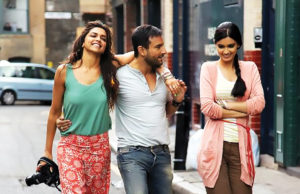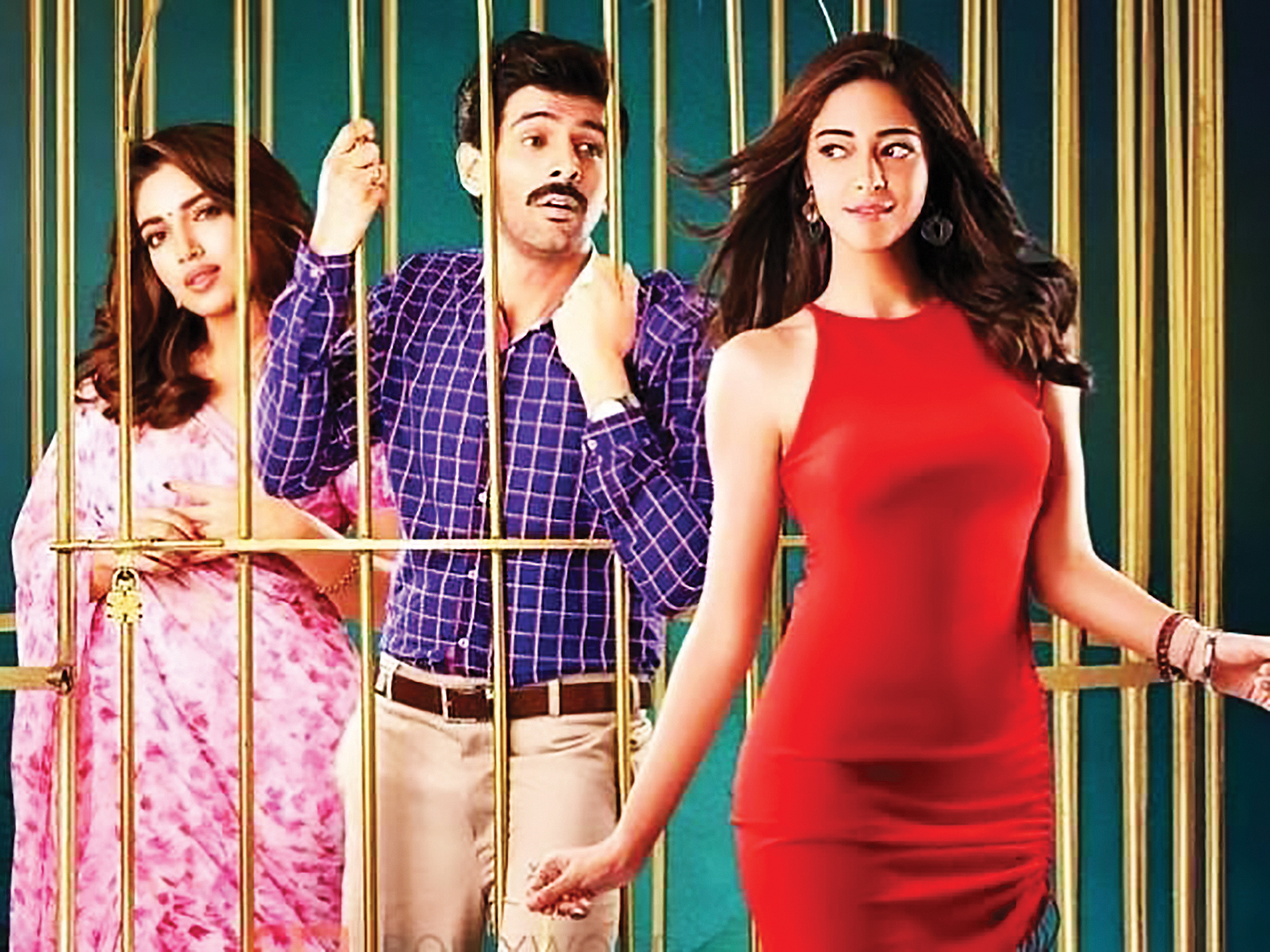Bollywood’s tryst with sexism has been a long-standing one. But it seems filmgoers are in no mood to take any more of it
“Biwi se sex maang lo, toh tum bikhaari; Biwi ko sex na de toh hum attyachari; aur kisi tarah jugaad laga ke usse sex haasil kar lein na toh balaatkari bhi hum hai…” (If you ask your wife for sex, you’re a beggar. If you don’t have sex with her, you are depriving her. And if you manage to get sex from her through any means, you are dubbed a rapist).
This dialogue is not from the 70s or 90s, rather from a 2019 film Pati Patni aur Woh. Who would imagine that such a crass sexist line would be used at a time when films around gender equality and women empowerment are being made, and the Indian film industry has finally started giving women their due!
Directed by Mudassar Aziz, the film stars Kartik Aaryan, Bhumi Pednekar and Ananya Pandey. After the Pyaar Ka Punchnama films and Sonu Ke Titu Ki Sweety, Kartik’s latest also seems to portray the helplessness of men – and apparently, women are to be blamed for it.
The makers of the film have allegedly said that they might remove the offensive marital rape remark. Also, the film’s female lead, Bhumi Pednekar has apologised for the same. And this belated realisation was the result of netizens strongly objecting to this sexist “joke” as soon as the trailer was released.
Social media users, especially Twitterati, expressed their discontent over the derogatory remark. While such sexist films in Bollywood have been there since the very beginning of cinema – earlier, the audience seldom objected to it. Thus, this is definitely a change – in the way filmgoers are perceiving what is being showed on screen. The recent controversy regarding Kabir Singh – which was called out and heavily criticised for glorifying toxic masculinity – is also proof.
If one takes a look back at Bollywood’s peaceful coexistence with sexism, it will be evident that be it the era of Raj Kapoor or Ranveer Singh – it prevailed everywhere. Moreover, it’s much deeper than just a passing remark or an item song objectifying women. It lies in the way women have been portrayed on screen, as compared to men.

In 2017, an analysis of Bollywood movies was conducted by IBM and two Delhi-based institutions. To study such disparities, researchers used an IBM dataset of Wikipedia pages of 4,000 Hindi movies released between 1970 and 2017 — extracting titles, cast information, plots, soundtracks and posters. They also analysed 880 official trailers of movies released between 2008 and 2017.
“Different features like occupation, introduction of cast in text, associated actions and descriptions are captured to show the pervasiveness of gender bias and stereotype in movies,” it revealed. The analysis showed that between 2015 and 2017, females were the central characters in 11.9% of Hindi movies, while back in the 70s, this figure was closer to 7%.
The study also threw light on the fact that male characters are mentioned twice as much as female characters. Also, men are attributed qualities like “wealthy”, “strong” and “successful”, while women as “attractive” and “beautiful”. In short, men are identified by their career while women by their appearance or their relationship to the male character in the film.
In 2018, another study conducted at the Centre for Studies in Gender and Sexuality over a course of 10 months revealed that among the total number of scenes displaying sexual relations, 74% translate into near sexual harassment.
Though it is a known fact that Bollywood films go a long way when it comes to portraying sexism, misogyny and objectification of women and tagging them as ‘romance’ – cinema is definitely undergoing a sea change, and so are the cinema lovers.
“Be it Darr – which is a 1993 film, or Ranjhanna – a 2013 film: even after two decades Bollywood has normalised stalking. And what makes it frustrating is that the audience did not say a thing about the latter – only because Ranjhanna showed an ‘innocent man’ who is ‘madly in love’ with a girl, and as if it justified the whole stalking and obsessing thing!” says Ritika Das, who works for an IT firm in Delhi.
Milie Dangwal, a DU student, seconds this view. She feels audience takes note of something misogynist or sexist in the film only when it is ‘on your face’. “Films like Pyaar ka Punchnama and Sonu Ke Titu Ki Sweety has shown women in a bad light. And just because they are comedies does not make it right! Audiences have loved both these films, and that should not have been the case!” She also spoke about Masti and Kya Kool Hai Hum franchises – which have shown women as nothing but sex objects.
There are films, which have been sexist but in a subtle way – and have managed to get away with it, is what Mahitha, a student of Amity, believes in. “Majority of people have liked the film Cocktail. But if you really take a closer look at it, isn’t it quite demeaning? I feel it denotes how girls like Veronica (character played by Deepika Padukone) – who are sexually active, bold and likes to party – are only good to sleep around with. Whereas girls like Meera (character played by Diana Penty) – a typical ‘good girl’, is into puja and is good with the household chores – are meant for marriage or love!”
She further adds, “If we start naming such films, then the list is endless. But what matters is that the number of such films have gone down and the audiences have started detesting anything which is offensive. That’s a development.” This being said, she concludes by hoping that Bollywood stars should also act in a responsible way while choosing scripts – and look beyond commercial success!





